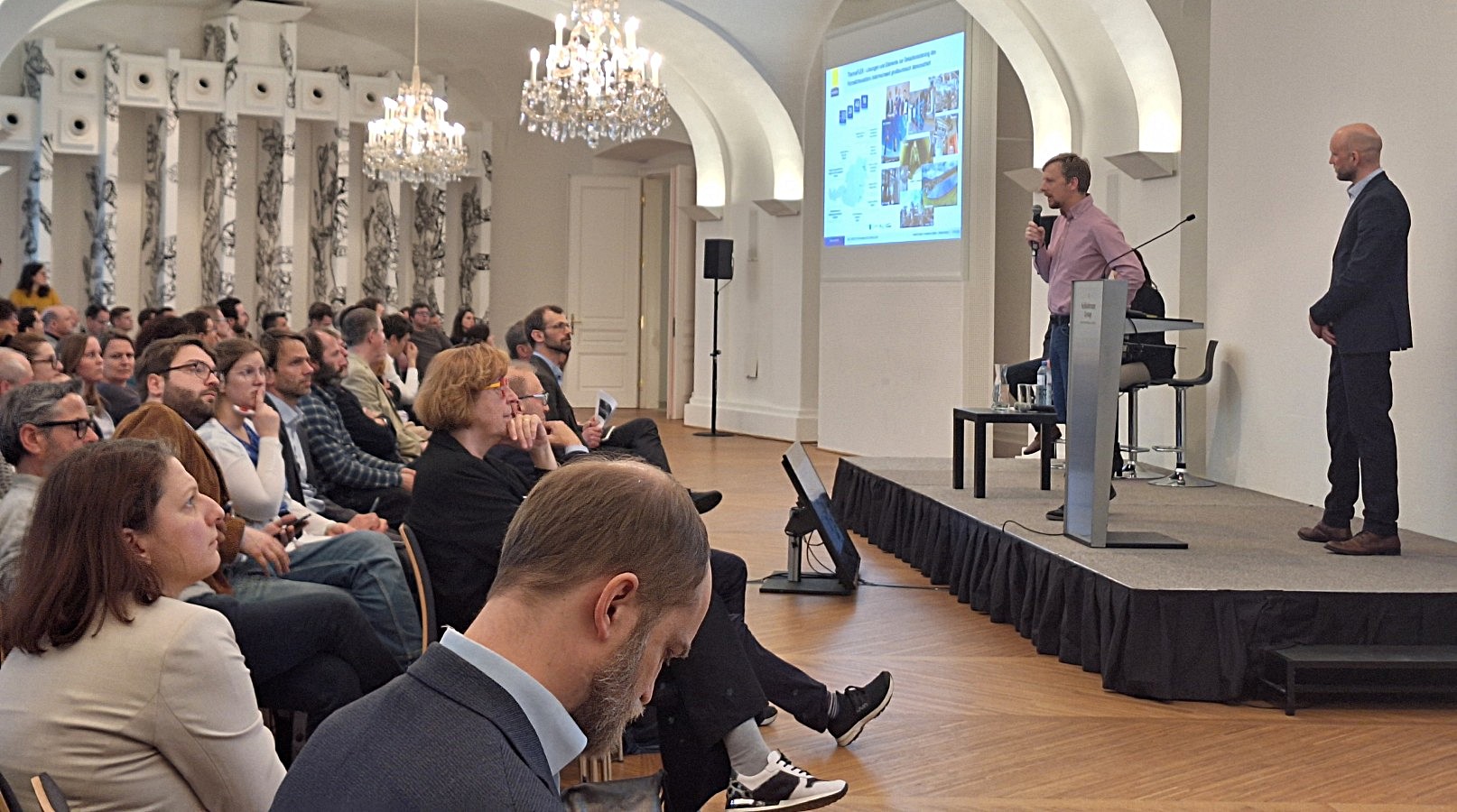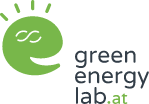Best practice examples for the energy transition
At the Climate and Energy Fund event on the transformation of industry on 27 March 2025, the ThermaFLEX project was presented as a best-practice example from the Green Energy Lab "Flagship Region".

Speaker Wolfgang Weiss, Head of the Industrial Systems division at AEE INTEC, und Urban Peyker, Head of the Industry, Companies and Financing Department at the Climate and Energy Fund © Green Energy Lab
1 April 2025 – As part of the RTI initiative for Transforming Industry, the event “Industry Impulses: Strengthen Innovations – Secure the Location” organised by the Climate and Energy Fund took place in Vienna on 27 March 2025. The motto was to strengthen domestic innovations and thus secure the future viability of Austria as a business location. Best-practice projects were presented at the event and the role of innovation in global markets was highlighted in two international keynote speeches. The aim was to provide impetus for future solutions and to promote personal and professional exchange.
Renewable energies, more energy-efficient technologies or sustainable production processes: Industry can make a significant contribution to reducing greenhouse gas emissions and mitigating climate change. Research and innovation for climate-neutral technologies play a key role here. The Climate and Energy Fund’s “RTI Initiative for Transforming Industry” supports industry’s efforts and facilitates close cooperation between research and industry.
“The new federal government is pursuing a dual objective: we must drive forward decarbonisation and at the same time strengthen the international competitiveness of our industry. The flagship projects from the ‘Transforming Industry’ programme are already showing how this can be achieved in Austria,” says Peter Hanke, Minister of Innovation and Location.
Specifically, the aim is to support the manufacturing industry in the development and demonstration of scalable key technologies and system solutions that lead to a significant reduction in greenhouse gases and strengthen the location. Bernd Vogl, Managing Director of the Climate and Energy Fund, says: “We offer industry exactly the support it needs to practically test, further develop and implement research results on a large scale. We act as a partner at the interface between research and the market.”
Best practice examples from Austria
During the event, participants were given an insight into the innovative power of various projects from the “Flagship Region Energy” programme. The large-scale research project ThermaFLEX from the Green Energy Lab Flagship Region aimed to develop strategies for making heating networks more flexible and tapping into alternative energy sources. The research also focussed on exemplary implementations in district heating supply areas in small, medium-sized and large cities. Various heat sources and flexibility elements were utilised, with the integration of various locally available waste heat sources playing a central role. Green Energy Lab has already focussed on waste heat utilisation in an Insight Talk on the topic of cooling and waste water as a sustainable heat source. A demonstrator of the ThermaFLEX project is also located at the Wien-Spittelau waste incineration plant. There, the waste heat from the flue gas condensation of the waste incineration plant is utilised as an energy source for a high-temperature heat pump, supplying thousands of households with heat.
Other examples from the “Flagship Region Energy” programme that were presented at the event: The USS2030 storage project of the WIVA P&G Flagship Region is gaining insights into the seasonal storage of renewable energy in the form of pure hydrogen. The Industry4Redispatch project of the NEFI Flagship Region aims to control industrial energy supply systems to optimise the use of flexibility.
A look into the future was then taken: Two successfully submitted projects from the 2024 call for proposals of the RTI initiative “Transforming Industry” presented their plans. The ImpreDry project uses digitally controlled systems to optimise the use of energy in the impregnation process for speciality papers and the HIPI cooperation project is developing a new generation of high-temperature heat pumps based on reciprocating compressors.
International keynotes: Impulses on the opportunities for Austria’s industry
International exchange plays a central role in science and innovation, just as it does in the economy. “I am convinced that a central key to green industrial development lies in cooperation between the Global North and the Global South. Fair cooperation – for example in the steel sector – can lead to a win-win situation,” says Camilla Oliveira, project manager at Agora Industry in the field of industry and an expert on its decarbonisation.
In the area of CO₂ storage, an example was presented from Denmark, where there are plans to store carbon emissions from cement production in offshore storage facilities under the seabed. “The good news: The positive momentum for CCUS is continuing across Europe and we are determined to play a key role in the transformation of the industry. What is needed now is confidence in innovation on several levels – new technologies and business models must go hand in hand,” says Johanne Bø, expert for Carbon Capture, Utilization and Storage (CCUS) at the international building materials group Holcim.
You are currently viewing a placeholder content from Default. To access the actual content, click the button below. Please note that doing so will share data with third-party providers.
© Klima- und Energiefonds/APA-Fotoservice/Schedl
Contact
Ludwig Fliesser
Communications Manager
T: +43 676 471 93 47
E: ludwig.fliesser@greenenergylab.at
